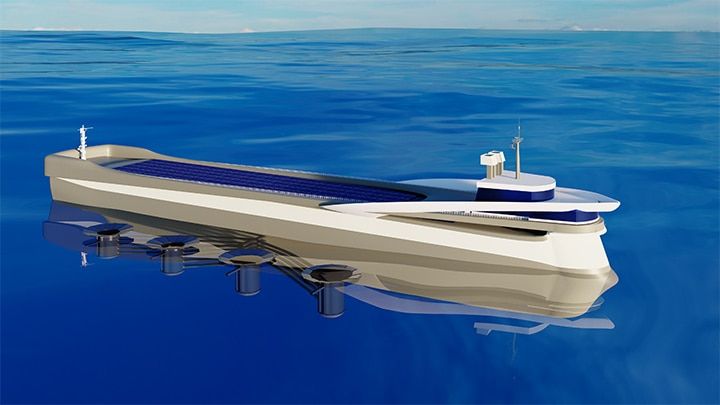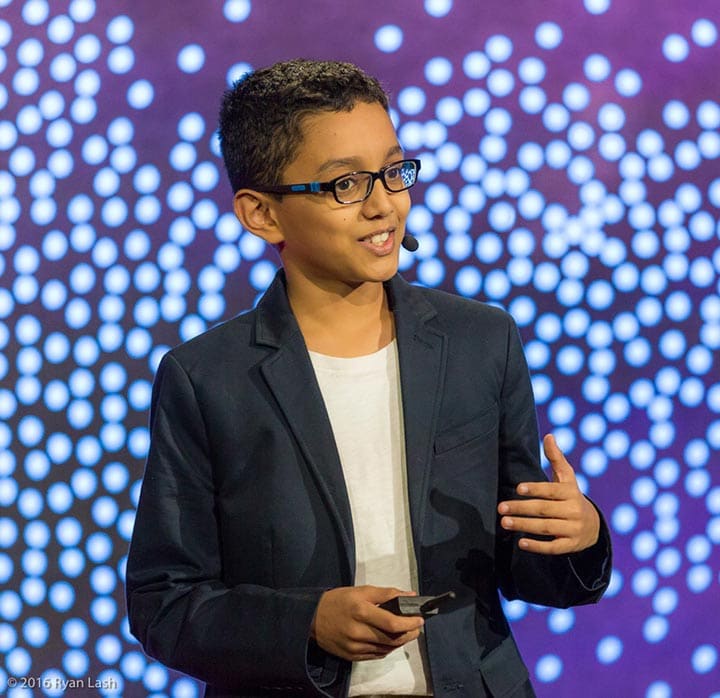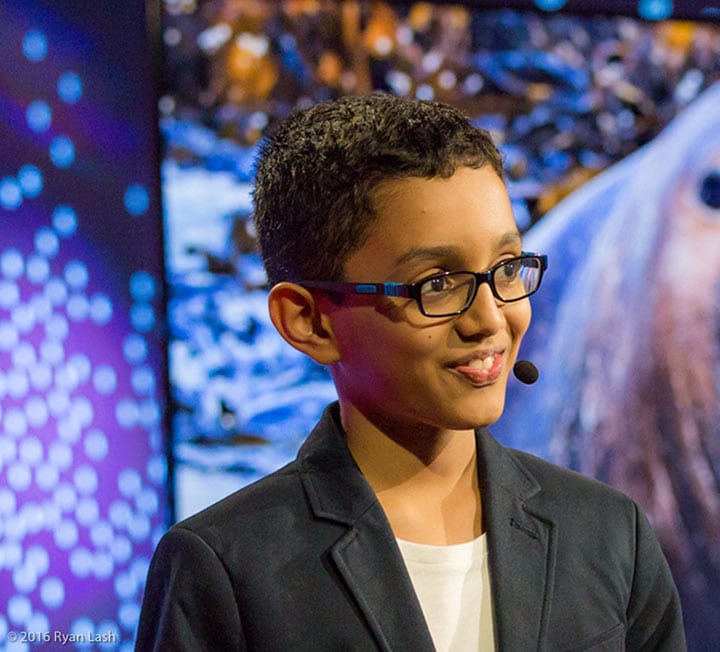Haaziq Kazi is not like any regular 7th grader you’ve seen. Given the title of ‘Child Prodigy’, this genius kid has achieved a lot for a 12-year-old. He has designed ERVIS, which is a unique ship that sucks waste out of the surface of the ocean and will be speaking about it at the #TEDxGateway event happening in Mumbai next month. This device has been acknowledged at a large level and deserves every bit of recognition and appreciation, no doubt. Wondering how such a young mind could think of such a brilliant idea? Well, we got to know about that and a lot more, read on to find out!
Excerpts:
How do you feel now that you’re identified as a ‘prodigy’?
I don’t think about it too much, my life goes on, as usual, it’s the same school, same assignments, same home, same friends, so things haven’t really changed much.
Except sometimes. It does feel good when people talk about it, but being an introvert, I don’t like talking too much about it. And when I sometimes really think about it, I feel a bit overwhelmed visualizing the problem I am trying to solve.
What inspired you to come up with the idea of ERVIS at such a young age?
It started with a project in school when our school asked us to do a TED talk on a subject which was close to our heart. At that time I had seen some documentaries on National Geographic on how plastic pollution was affecting marine life. It was disturbing to see how marine life was being affected and eventually they were dying and it moved me. I started doing more research on it and started thinking about what I would want to do to tackle the problem.
As part of my research, I also happened to see among other things Boyan Slat‘s TED talk on how he intended to tackle the ocean’s plastic problem. I figured I could create a ship which can go and reverse the damage we as humans have done. Hence the idea of ERVIS was borne.

When did you start working on ERVIS and how long did it take for it to turn into reality?
I started working on it sometime in late 2016 and by 2017 I had finalised the current version of ERVIS. The first draft was very basic but then I worked with some scientists and designers to create a more practical design and by June 2017 it was ready.
I am still working on trialling the ship and am prototyping it currently.
Is there any change at school after ERVIS?
Indus International School has been super supportive of my initiative and have always emphasized on total education including such activities for all the children. I feel privileged to study in this institution. The success of the talk has prompted more extracurricular activities and led to the Ted Ed Club flourish prominently.
How do you manage to study and play alongside ERVIS?
It’s not easy. In my case, I find both the school and parents being supportive of my initiative and they allow me to have the liberty to invest extra time for ERVIS.
Talking about studies, it is demanding. We have some very complex assignments that we really have to be creative about. That also help us think out of the box. And then I love playing football and video games, the latter of which only I am allowed to play on holidays. And then there is ERVIS, my dream, my passion. I try to connect with like-minded people to talk about it and innovate it. Support from people like TED-Ed Weekends and TEDxGateway has helped me dedicate more time towards making it a reality and spreading the message.
What kind of challenges did you face during this journey?
Well to begin with it almost didn’t happen, there was a time when I was working in local school TED-Ed club and I got so engrossed in making ERVIS that I forgot to do my homework and our school has a rule which would have kicked me out of the club for ignoring my homework. However, the teachers were very kind and supportive and they allowed me to continue, and as they say, the rest is history.
But it was never easy. Some of the challenges I faced right in the infancy of research when I was figuring out on what I wanted ERVIS to do, understanding the magnitude of the waste problem and how I don’t end up having ERVIS contribute to the problem that I am trying to solve. Did you know that one of the biggest contributors to the waste problems are ships which are in the ocean that use high Sulphur fuel and dispose off waste in oceans? I wanted ERVIS to address the problem by using cleaner fuels like hydrogen or RNG and do waste collection from ships in oceans.
The data 2 years back wasn’t as widely available as it is today (if you think and research even today there is not a single entity who can authoritatively claim to document the full magnitude of the problem, every day you read the news and you will see new data coming which reveals the magnitude of the problem. Like only last week 16 November 2018, scientists published a paper in the Environmental Pollution Journal which found more than 80% of fish in Amazon has plastic in them) and I really had to dig deep and talk to people to understand how the problem has come to be where it is and how I could address it. Fortunately, I got support from all corners and really got answers to questions I had which helped me shape ERVIS to what it is today.
How did your parents react when you first told them about your genius plan?
To be honest, nobody thought at the time that ERVIS had a future. For them, my first ERVIS was a project I had to do in school and my mum was super supportive of me when I did the first prototype, which she helped me make. They were always proud of me about how I applied my thought process on a problem that I felt passionate about, but that was about it. Think about it, a 10-year-old creating a ship to clean oceans, sounds great but difficult, fathom it to be a viable reality to help our planet.
Not until the TED-Ed weekend folks from New York reached out to my school stating they had selected my project to be talked about, there did the reality sink in that somebody beyond your parents believed that an 11-year-old could make a difference to the world.

How do you see ERVIS growing in future?
ERVIS for me is not a ship, it’s a platform for like-minded people and organizations to collaborate and associate to address a common problem, the problem of waste in the oceans and the impact it has on life. I see it as a connected movement for people to contribute to help save our oceans and water bodies like rivers. ERVIS has so much potential of evolving from a standalone ship to a flotilla of specialized autonomous vehicles of the collector ships which collect waste and the transporter ships which bring it back to land. There could be storage stations at oceans to store and process the waste and also to have innovative processing stations at land. There could be an ecosystem of upstream and downstream collaborators who could help ERVIS flourish and speed up the cleaning of the waste. Researchers can collaborate together to help understand the problem better and find innovative ways to stop it from affecting life and spreading.
The sheer magnitude of the problem represents an opportunity of massive scale, the opportunity for us to come together through ERVIS to tackle the problem we have created.
Do you have any plans for the innovation of more devices like ERVIS?
Actually, I do, I was thinking of late urban transportation and how I could do something about it. Drive efficiency in speeding up transportation in metro cities through sustainable and innovative manner. Its still in infancy stage, hopefully, I could help address it. I really like the work Elon Musk is doing with HyperLoop and Boring Company and see myself trying to help the problem they are solving.

